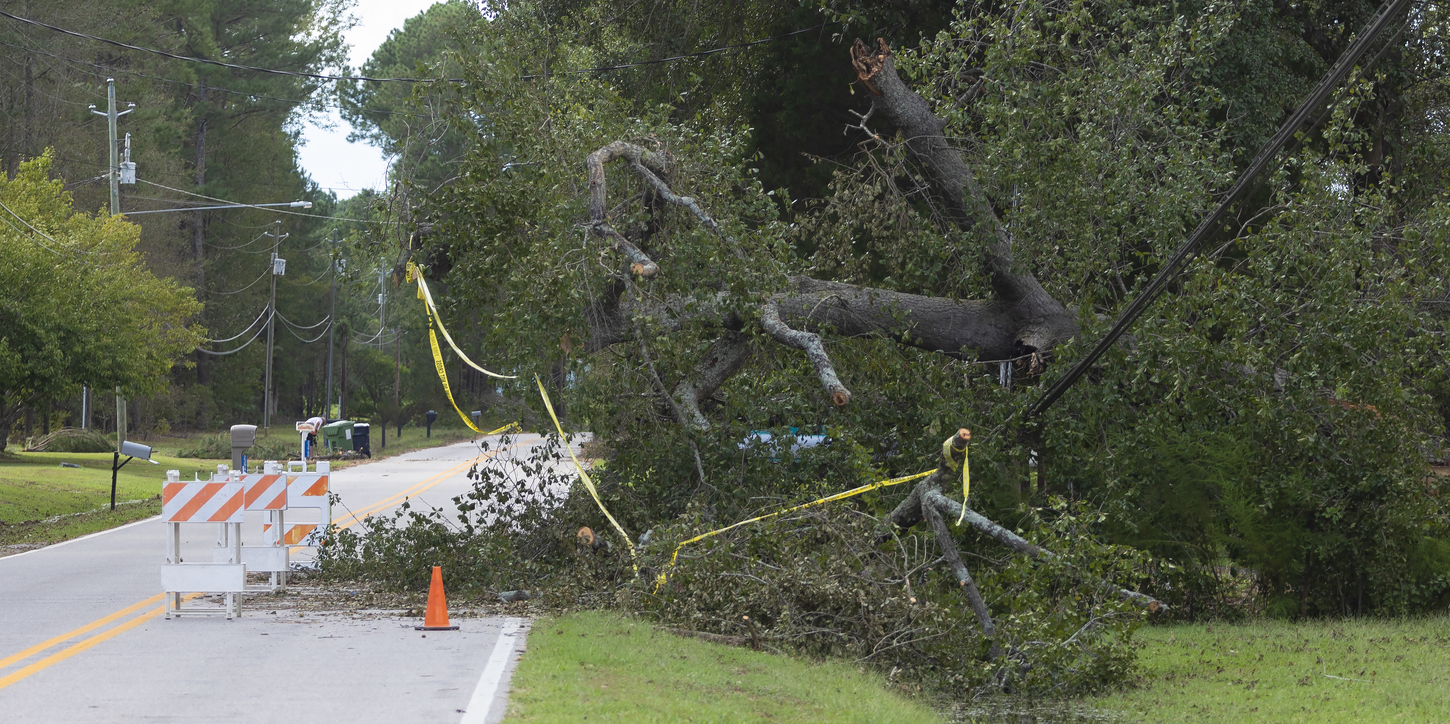Moody’s Analytics on Friday estimated the economic cost of Florence to be between $38 billion and $50 billion including damage to property, vehicle losses, and lost output. At the upper end of that range, Florence would rank seventh among the biggest storms, just after Hurricane Andrew in 1992, according to Moody’s estimates.
The widespread damage, however, is lower than last year’s Hurricane Harvey, which smashed into Texas and inundated the state with rain for days. Harvey’s bill for the insurance industry was $30 billion, according to Wells Fargo Securities, with its Category 4 winds causing more severe damage than the Category 1 winds of Florence.
Based on Moody’s estimates, last year’s three hurricanes each caused more damage than Florence: Harvey’s tally reached $133.5 billion; Maria’s $120 billion; and Irma’s $84.2 billion.
Florence, which made landfall Sept. 14 and has claimed 41 lives in the Carolinas and Virginia, is continuing to wreak havoc. Rivers in the Carolinas are continuing to rise, and more than 600 roads were still closed Friday in North Carolina. North Carolina Gov. Roy Cooper warned it still isn’t safe for many people to return home including the 3,700 who remain in shelters.
Part of the Cape Fear River is forecast to crest Saturday while the Waccamaw River at Conway, S.C., isn’t expected to crest until Tuesday or Wednesday next week , according to the National Weather Service.
In a rescue Thursday night in the town of Kelly, N.C., more than 100 stranded people were plucked from harm by National Guard and Coast Guard helicopters, authorities said.
Private insurers are preparing for an estimated $1.7 billion to $5 billion in total costs from Florence. The estimates from catastrophe-risk modeling firms include damage to homes, cars and commercial property, and also include policy benefits like living expenses for homeowners and business interruption for companies, but typically exclude flood claims for individual homes.
“The big thing is getting our adjusters into areas that remain flooded,” said Gina Schwitzgebel, general manager of the nonprofit Coastal Property Insurance Pool, which insures many houses in North Carolina near the ocean. “ We’re moving as fast as we possibly can.”
Coastal Property Insurance Pool, which is a state-created last resort option for insurance, has more than 32,700 claims in hand, Ms. Schwitzgebel said. The claims are largely for roof repairs, replacements of broken windows and some structural damage to homes from fallen trees.
Risk modeler Karen Clark & Co. said the cost to the insurance industry was held down because hurricane-force winds were experienced only along the North Carolina cost, with less powerful, tropical-storm-force winds elsewhere in the two states.
This led to widespread low level damage,” the firm said.
USAA, one of the biggest insurers in the Carolinas, is up to 38,000 Florence claims. It had roughly 49,000 claims from Harvey.
Its large number of claims so far is partly because it specializes in insuring military members, analysts said. Large Army and Marine Corps installations are located in the eastern part of North Carolina, and the Carolinas also are home to many military retirees. A spokesman for the insurance company, Richard Johnson, said “we have just been starting to get access to the area” hardest hit. The insurer is seeing roof damage on the coast, and extensive flooding of automobiles and houses inland.
State Farm, the biggest home insurer by market share in North Carolina, said it had received about 12,400 homeowner claims and 1,900 automobile claims in North Carolina related to Hurricane Florence as of Sept. 20. Policyholders in South Carolina, where it also is a top insurer, had filed 1,610 home and 500 auto claims.
The Federal Emergency Management Agency’s flood-insurance program has received some 8,000 claims for a program that allows policyholders to get $5,000 of their claim without having to get a visit from an adjuster.
The current estimates for the insurance industry’s bill are dramatically lower than some of the figures discussed about when Florence was spinning offshore at Category 4 wind strength.
“Since the storm weakened from a Category 4 to a Category 1 at landfall, losses for the insurance industry were cut significantly—to under $5 billion from a potential loss of $20 billion,” Wells Fargo analyst Elyse Greenspan said.
Assuming $3.2 billion as the estimated industry cost, she expects big car and home insurer Allstate Corp. to post pretax catastrophe losses of $222 million, based on its market share of about 7% in North Carolina, South Carolina and Virginia.
An Allstate spokesman said the insurer would release catastrophe figures at the end of the month. For now, the insurer is using aircraft, satellites and other technology to help size up damage and pay claims.
Much of the damage will be the responsibility of the federal government’s flood-insurance program, but much also will hit people’s pocketbooks directly because many homeowners don’t own the policies.
“We need to do more to provide a functioning flood market,” Verisk Analytics Inc. Chief Operating Officer Mark Anquillare said. Government flood maps “have been relatively narrowed as to where they’ve identified flood risk because there’s a political influence in there. Politicians and a lot of people don’t want houses in flood plains where it would potentially hurt home values.”













